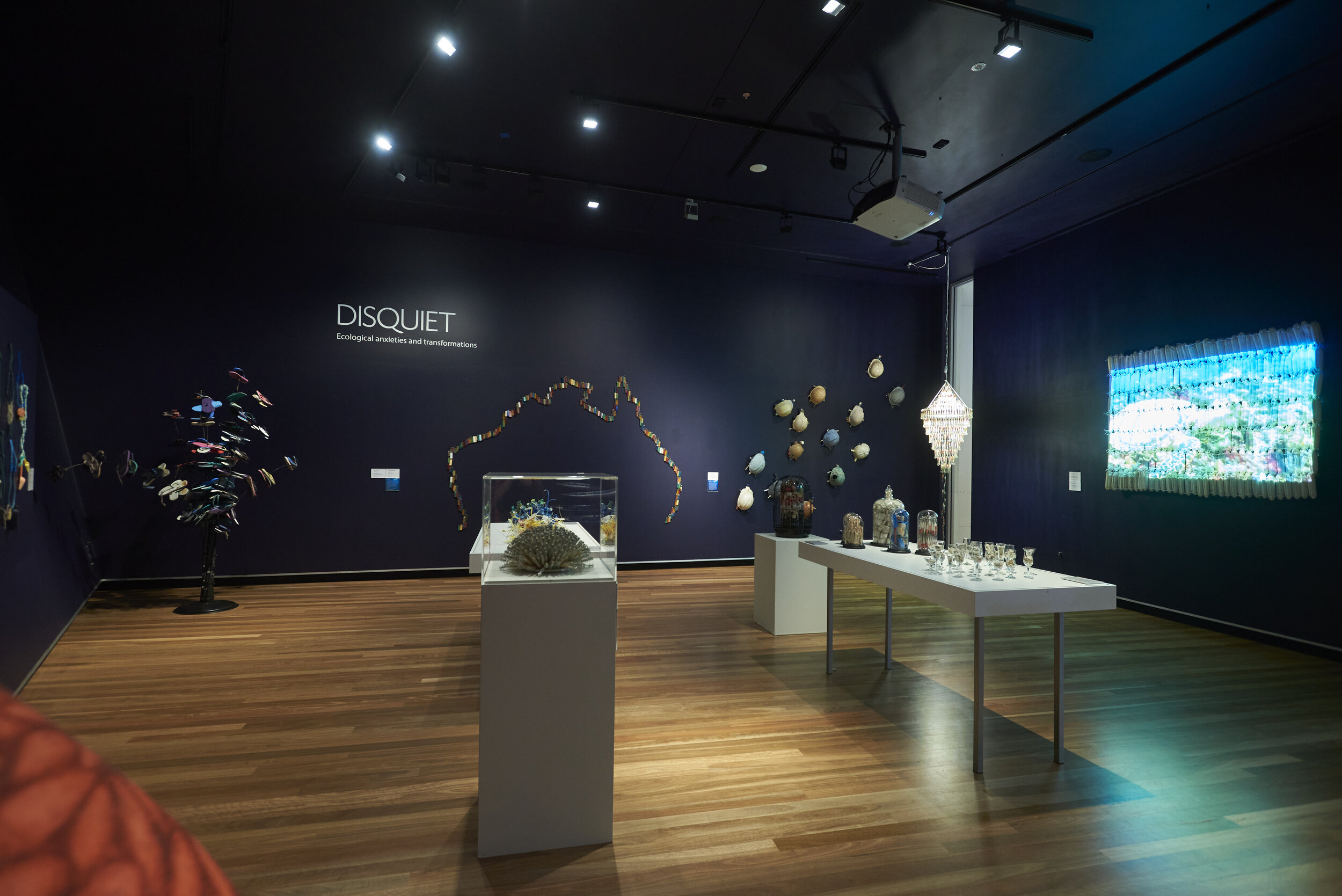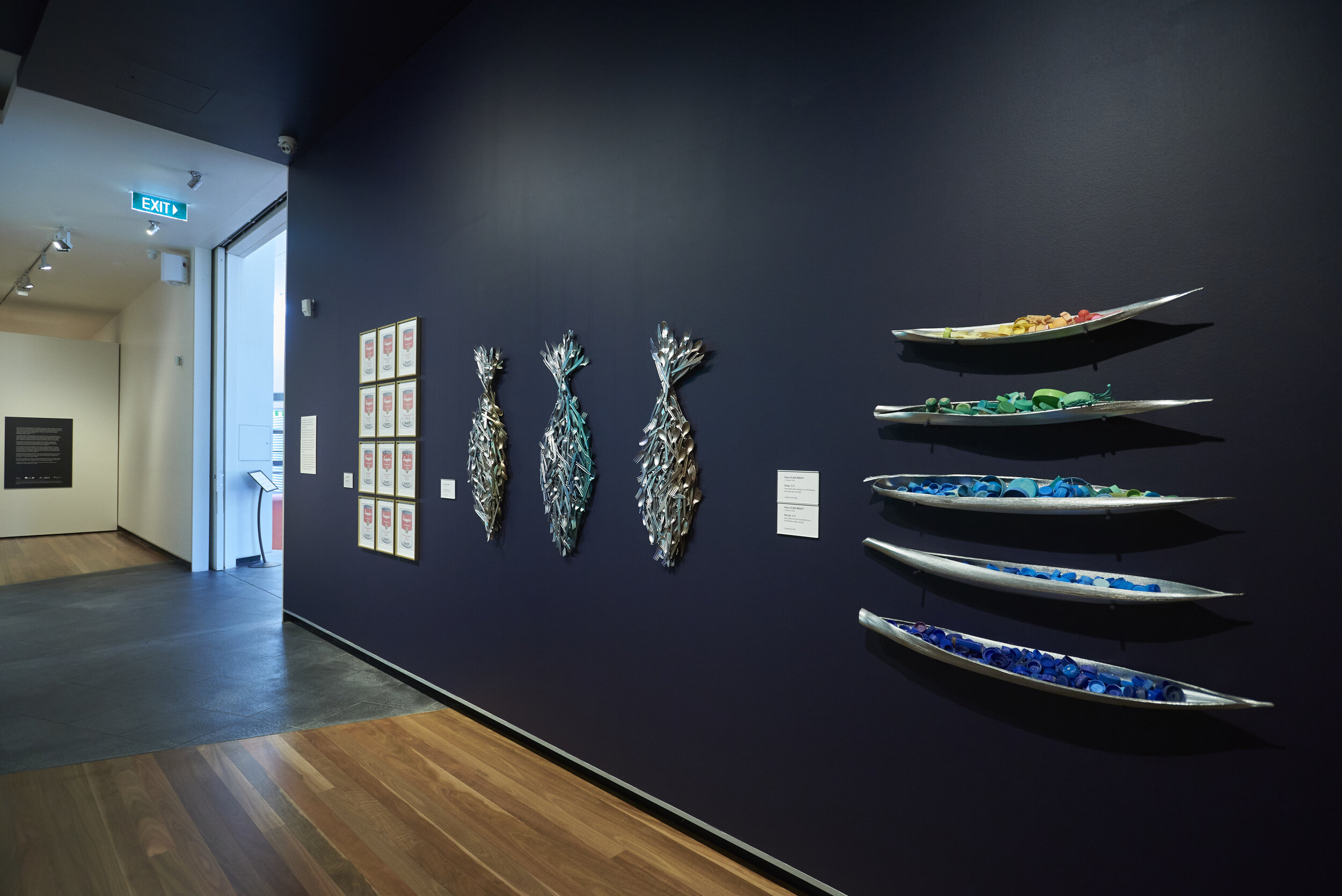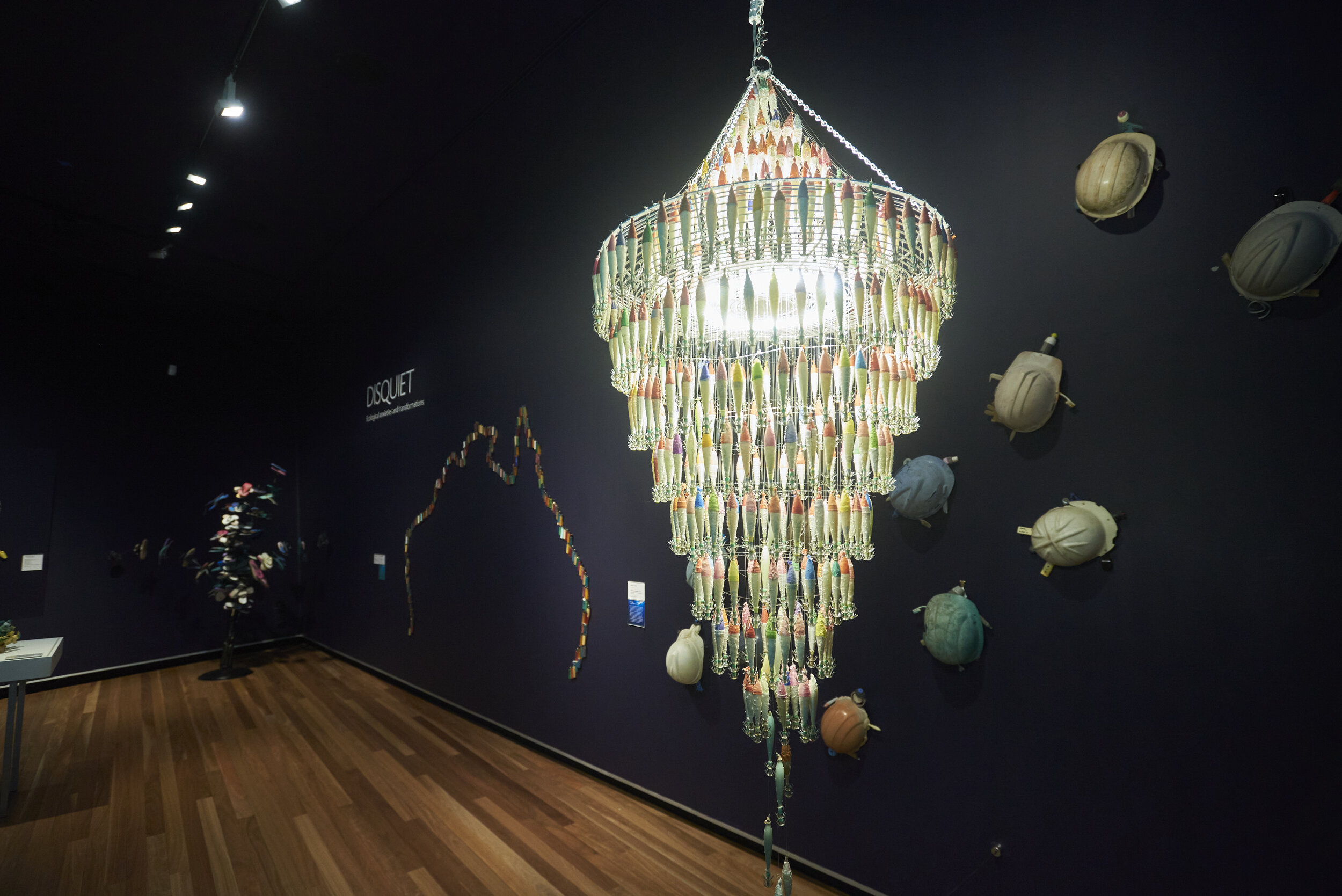Anxiety and allure in the work of Barbara Dover and Robyn Glade-Wright
/It is an effective work of art that can engage our emotions and our intellect. But when there is dissonance between that which our emotions find loveable and alluring, and that which our intellect tells is us is abhorrent, then it is a very potent work of art indeed. Far North Queensland artists Barbara Dover and Robyn Glade-Wright’s touring exhibition ‘Disquiet: Ecological Anxieties and Transformations’ exploits this discordance to create a new emotional language for the challenging conversations we are having about our use of natural resources and the destruction caused by plastic pollutants.
Dover and Glade-Wright’s evident intention to highlight environmental issues and ethics has been the focus of their multidisciplinary art practices spanning the last two decades. Acknowledging that human beings don’t like to be told bad news, and that we lack what social scientists call ‘foresight intelligence’ – the ability to recognise and act on perils before it is too late – the artists are exploring the role of art in generating the motivation to act on our understanding of the environment.
On initial viewing of the sculptural and installation works in ‘Disquiet’, we experience sensations of wonder and delight, possibly the same feelings we might have when we are immersed in nature. Our emotions are engaged by the simple beauty of the objects, or because the artworks remind us of good things – thongs discarded on a beach to make the dash across hot sand for the water, a swimming race to a bobbing buoy, a turtle paddling underwater, a crab spotted in a rock pool. We understand and recognise the exhibition’s quirky urchins and quickly develop an affection for them. When our intellect takes its turn and assesses the artworks – takes in the materials used, reads the didactics, processes the ideas – we feel genuine alarm. This is the power of art at work. We can be told that by 2050, the weight of plastic in the ocean will be greater than the weight of all marine creatures, and we will chew our lip as we add the information to our mental store of doom data. But when something we love is threatened, our likelihood of retaining the information and possibly even acting on it is heightened.
Sculptures such as Dover’s ‘Decoy’ and Glade-Wright’s aptly titled ‘Choke’ series (both 2018) engage on aesthetic and emotional levels as we enjoy the pleasing arrangements and their connotations of jewellery and precious things. When we become aware that they are made of fishing detritus that is dumped by the tonne on our beloved beaches, the discord hits like a light coming on that is felt, not seen.
Through their heartfelt and intellectually rigorous approaches, Dover and Glade-Wright bring us highly resolved artworks with an elegant whammy of a message. They have taken time, care and thought to generously produce for us these ‘treasures’ from the ocean that we can wonder at, think on and feel deeply about. This year has shown us that the unthinkable can happen on a global scale. Perhaps now it is time to notice our feelings about the things we hold dear and act on them.
Andrea Huelin, Cairns
Supported by the Queensland Government through Arts Queensland, ‘Disquiet: Ecological Anxieties and Transformations’ premiered at Artspace Mackay in January this year and will tour to NorthSite Contemporary Arts in Cairns (6 August – 26 September 2020), Umbrella Studio Contemporary Arts in Townsville (29 January – 28 February 2021), and Gatakers Artspace in Maryborough (7 May – 27 June 2021).








